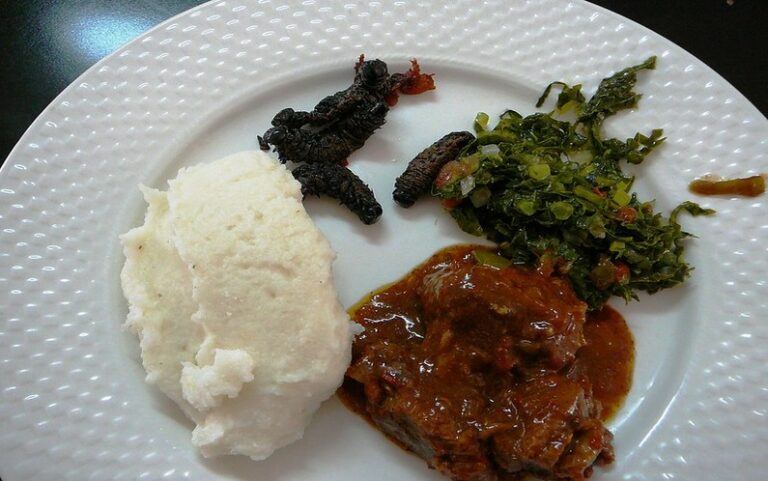Introduction: The fusion of Zambian cuisine
Zambian cuisine has evolved significantly over the years, combining various culinary influences to create a unique blend of flavors, textures, and aromas. The country’s proximity to other African nations and its colonial history have played a significant role in shaping Zambian cuisine. British and South African cuisines have heavily influenced the country’s culinary landscape, introducing new ingredients, cooking techniques, and flavor profiles. Today, Zambian cuisine is a vibrant and diverse melting pot of cultures, reflecting the country’s cultural diversity and rich history.
British influence on Zambian dishes
British colonialism in Zambia introduced new ingredients and cooking techniques that have become integrated into Zambian cuisine. British recipes, such as stew, roast beef, and fish and chips, have all had an impact on Zambian cuisine. For example, Zambian beef stew is often flavored with Worcestershire sauce and served with mashed potatoes, a British-inspired side dish. Additionally, British-style cakes and biscuits have influenced Zambian bakery items such as scones and shortbread biscuits.
South African influence on Zambian dishes
South African cuisine has also had a significant impact on Zambian food, particularly in the southern region of the country. The two countries share many traditional dishes, such as pap, a type of maize porridge, and chakalaka, a spicy relish made with beans and vegetables. South African braai, a type of barbecue, has also become popular in Zambia, with many Zambians incorporating the technique into their cooking methods.
Common ingredients and cooking techniques
British and South African cuisines have introduced several ingredients and cooking techniques that have become common in modern Zambian cuisine. For example, the British introduced tea and its accompanying culture, including afternoon tea, which has become a popular social activity in Zambia. South African staples such as maize and sorghum have also become significant ingredients in Zambian cuisine, used to make porridges and other traditional dishes. Additionally, grilling and barbecuing, introduced by the South Africans, have become essential cooking techniques in Zambia.
Adaptations and modifications of traditional dishes
While British and South African cuisines have influenced Zambian food, Zambians have adapted and modified traditional dishes to suit their tastes and preferences. For example, nshima, a traditional Zambian dish made from maize flour, has been modified to include cassava flour and millet flour. Additionally, traditional dishes such as samp and beans have been adapted to include spices and meats commonly used in South African cuisine, such as beef and lamb.
Conclusion: The evolution of Zambian cuisine
Zambian cuisine has undergone significant changes over the years, influenced by various culinary traditions and cultural practices. The British and South African cuisines have played significant roles in shaping modern Zambian food. However, Zambians have also adapted and modified traditional dishes to create a unique blend of flavors and techniques that reflect their cultural diversity and rich history. The fusion of Zambian cuisine continues to evolve as new ingredients, cooking techniques, and flavors are introduced, creating a culinary landscape that is both exciting and diverse.

